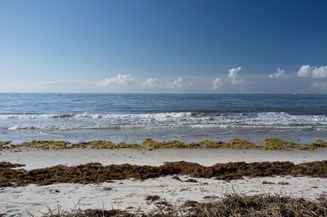Researchers discover unique DNA methylation patterns driving population diversity and interactions in ocean microbes
SEOUL, South Korea, Dec. 8, 2022 /PRNewswire/ — DNA methylation is a biological process through which methyl groups are added to the genetic material. It is used as an epigenetic strategy by prokaryotes to perform an array of functions such as protection against viral invasion using restriction-modification (RM) systems. However, there is limited understanding of its role in microbial ecology.
To this end, a research team led by Professor Woo Jun Sul from Chung-Ang University and Dr. Hoon Je Seong (currently from Macrogen Inc.), South Korea has explored the differences in DNA methylation patterns across different members of the ocean microbial communities in the northwest Pacific Ocean. Their study was published online on September 28, 2022, in Volume 10 of Microbiome. “In-depth DNA methylation project began only in 2014, with the release of long-read sequencers. This sparked our curiosity and we wanted to apply it to microbial ecology. Hence, we used a metagenomics approach to explore DNA methylation in a community rather than at an organism level,” says Prof. Sul.
In 2015, a large-scale Shipborne Pole-to-Pole Observations (SHIPPO) project was initiated by the Korea Polar Research Institute, to filter out microorganisms from ocean surface samples from the Pacific Northwest to the Bering Sea.
The team extracted DNA from these captured specimens and performed metagenomic sequencing. Next, they generated massive 15,056 viral (v), 252 prokaryotic (pro), 56 giant viral (gv), and 6 eukaryotic (eu) metagenome-assembled genomes (MAGs). Upon further analyses, the team found that nearly 95% of the proMAGs belonged to new taxa that could not be classified using existing genomic databases. “This finding has immense potential and could provide new insights into the genomes of unculturable ocean microbes,” Prof. Sul explains.
The team also found that MTase II was the most common class of MTase expressed in these organisms. Furthermore, the identification of methylated motifs revealed unique DNA methylation patterns, which eventually led to the discovery of a distinct methylation profile in Alphaproteobacteria.
Moreover, they discovered heterogeneity in the methylation profile of Pelagibacter even at the “strain-level”. This implies that dynamic cellular events occur within Pelagibacter in the surface waters of the northwest Pacific Ocean.
Additionally, they found the presence of uneven methylation patterns in the Cand. P. Giovannoni NP1 genome, suggesting potential defense mechanisms used by this bacterium.
These findings have already paved the way for a new era of meta-epigenomics, which directly measures methylation in environmental microbes. In conclusion, Prof. Sul surmises, “Our study will help discover candidate targets to prevent pathogenicity in the environment. This can be of immense importance to the global public health systems by detecting pathogenic signals that threaten human health.“
Reference
Title of original paper: Marine DNA methylation patterns are associated with microbial community composition and inform virus–host dynamics
Journal: Microbiome
DOI: https://doi.org/10.1186/s40168-022-01340-w.
Contact:
Se-Jin Oh
02-820-6614
350209@email4pr.com
SOURCE Chung-Ang University


